Pulsetto is a vagus nerve stimulator that’s supposedly capable of biohacking your parasympathetic nervous system, with the goal of reducing stress and improving sleep.
The device uses weak electrical currents to stimulate the vagus nerve in the area below your earlobes. You can feel those currents as a tingling sensation. The idea is that specific frequencies can help down-regulate the sympathetic branch of your nervous system (the one that’s responsible for the fight or flight response) while upregulating the parasympathetic branch, which is responsible for resting and digesting.
I tested Pulsetto for several weeks to assess its influence on my perceived stress levels, as well as on my heart rate variability (one of the most reliable biomarkers for objectively assessing the body’s stress response). I also dug into the scientific literature behind vagal nerve stimulation and specific studies referenced by Pulsetto on the effectiveness of the device.
Based on everything I’ve read about the science behind vagal nerve stimulation, I was excited to try Pulsetto because the device promised to help reduce stress almost instantaneously and without taking time out of my day. In other words, Pulsetto claims to be as effective as meditation or other mindfulness practices without requiring the same time investment. What’s not to love about that?
However, during my research, I found that Pulsetto doctored one of the key studies on the effectiveness of vagal nerve stimulation, replacing a diagram showing the actual device used by researchers with the Pulsetto device. Upon further investigation, my editorial team and I discovered that the company has published (on its website) a rewritten version of that same study, with fake text implying that Pulsetto was involved in the research.
So while I’ll tell you about my experience with Pulsetto later in this review, I think it’s more important to discuss the company’s fraudulent marketing tactics.
Pulsetto’s Doctored Research
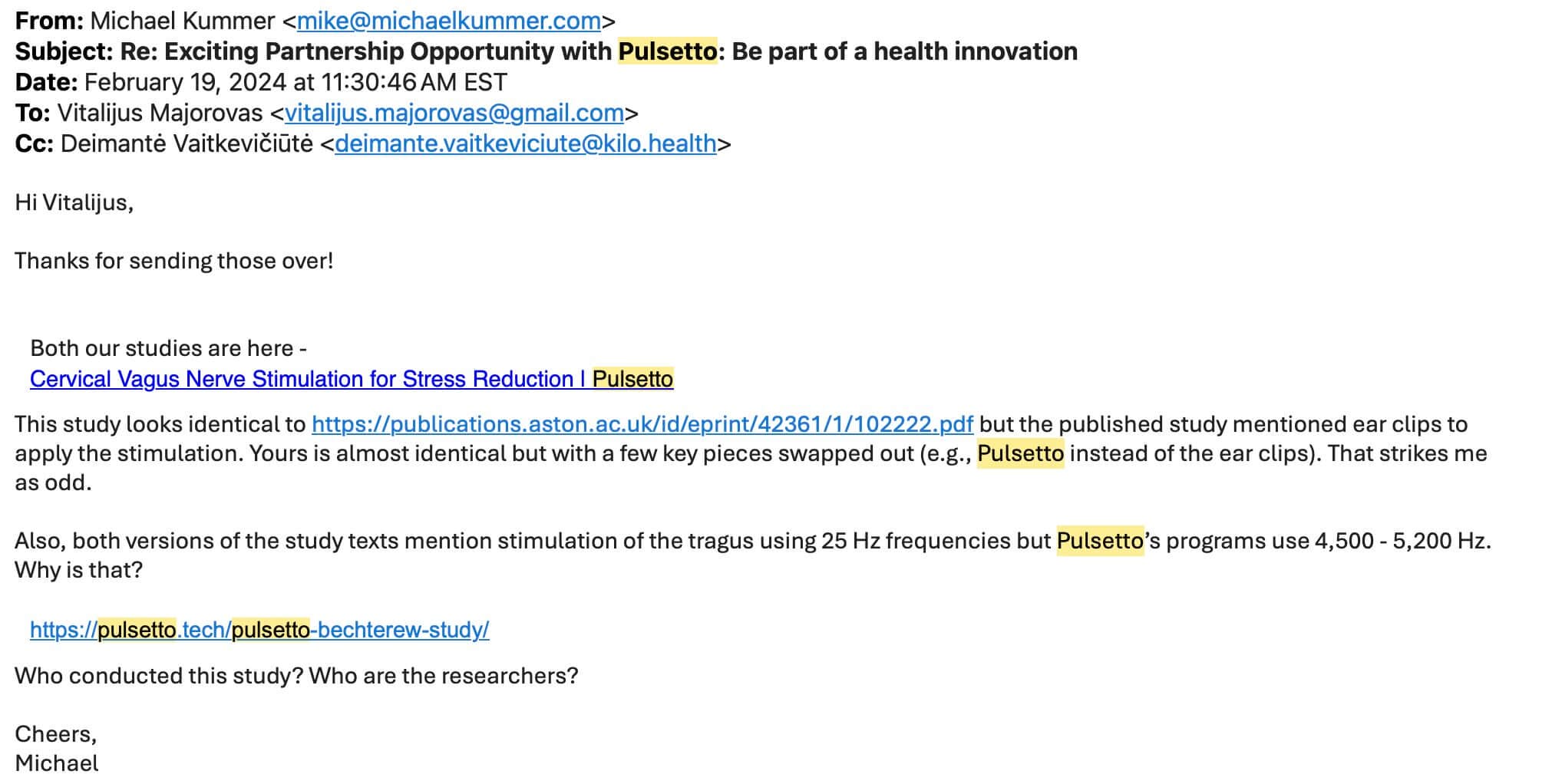
Unfortunately, Pulsetto has done something many device manufacturers in the biohacking and wellness space do: use scientific research that shows the efficacy of a method or technology to sell their product, even though the product in question was never part of the referenced studies.
Frankly, I could wrap my head around such a marketing approach if the device in question were based on the exact same technology, protocol and procedures as the device used in the given research. However, most of the studies that have been conducted on VNS for stress reduction and sleep improvement are based on relatively low frequencies in the range of 10 Hz to 100 Hz. Pulsetto operates at frequencies in the 4,500 Hz to 5,200 Hz range, and I’ve found no instances of those frequencies being used in scientific papers.
In other words, there is zero evidence that Pulsetto actually works.
But that’s not all.
The company published a study on its webpage (at the now-deleted URL https://pulsetto.tech/blogs/cervical-vagus-nerve-stimulation-for-stress-reduction) which suggested that Pulsetto was used in a study conducted by the Data Science Research Group, School of Computing, University of Kent in the United Kingdom.
The copy of the study on Pulsetto’s website showed a diagram with the Pulsetto device. I reviewed the study on the University’s webpage, which includes a diagram of the actual VNS device that was used – an ear clip rather than Pulsetto:
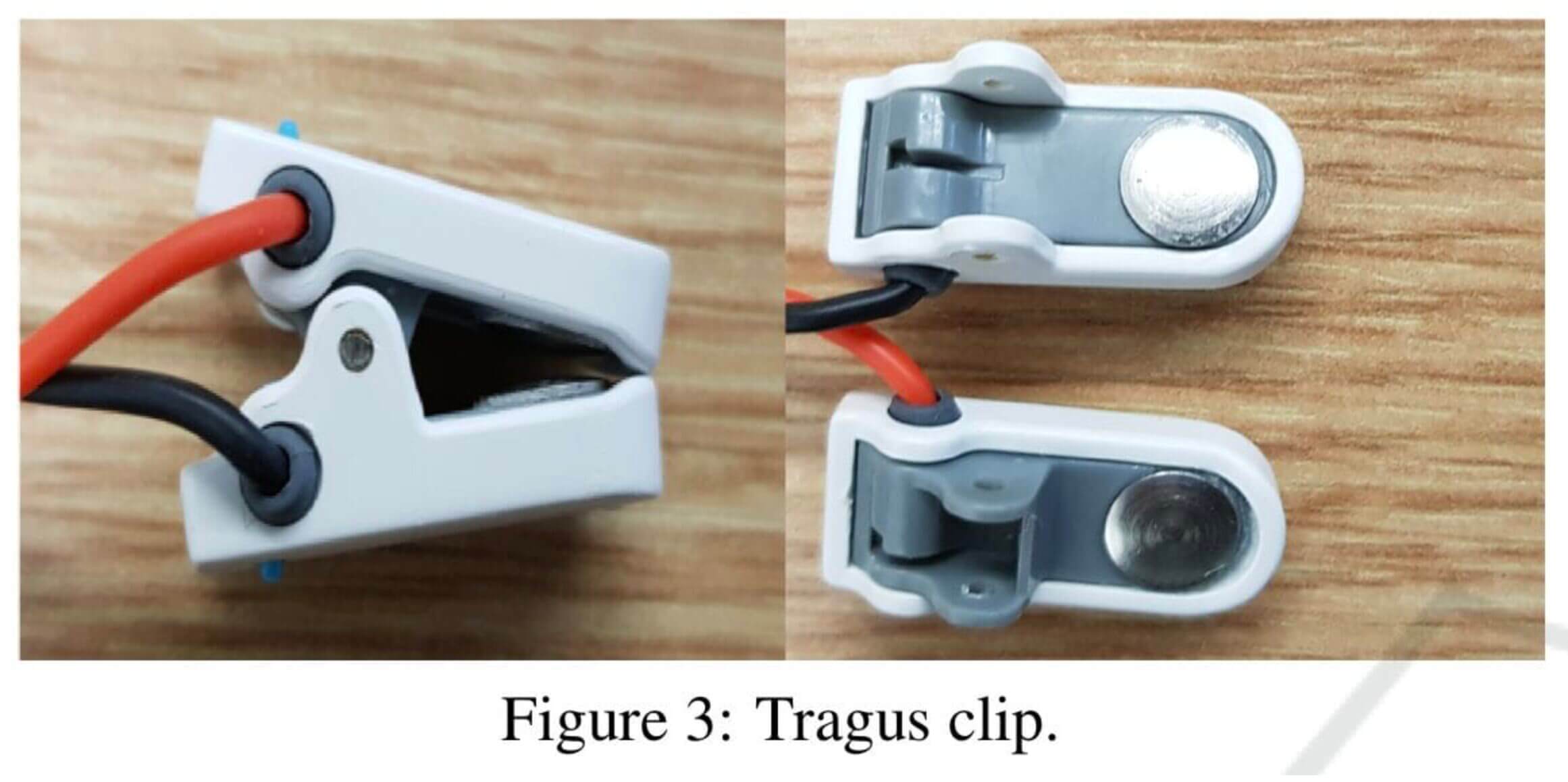
I was in disbelief realizing that Pulsetto had doctored the study to make it look like it was conducted with the company’s device. So I reached out to the company’s co-founder Vitalijus Majorovas and asked for clarification, but I never heard back.
As I noted above, the doctored diagram (showing Pulsetto) was subsequently removed from the Pulsetto website. And when it came time to write this review, I realized that I had forgotten to take a screenshot of it. As such, my editor decided to see if he could find an archived copy on the Wayback Machine or elsewhere on the internet.
While conducting that research, he discovered that Pulsetto not only doctored the original study’s diagram, but the entire research study itself.
Plagiarized Study With False Information
The original study, published in 2021, was titled “Tragus based Vagus Nerve Stimulation for Stress Reduction” and used an ear clip. The words “neck” and “Pulsetto” do not appear in the study’s text.
The study published by Pulsetto first appeared in the Internet Archive on April 27, 2024, and is titled “Cervical Vagus Nerve Stimulation for Stress Reduction.” The text of this study (archived here, in case it gets deleted) is almost identical to the text of the original study, except that sentences have been slightly rewritten and mentions of “neck” and “Pulsetto” have been added.
For example, the first line on the original study’s abstract states:
“Non-invasive vagus nerve stimulation is fast becoming a popular alternative treatment method for various health disorders.”
The same sentence of doctored study reads:
“Non-invasive vagus nerve stimulation is quickly gaining popularity as an alternate treatment for a variety of health conditions.”
Similar rewriting is present throughout the doctored study, which also contains a fake diagram. Here’s the original:

And here’s the doctored version, which suggests that the research was conducted on the neck instead of the ear:
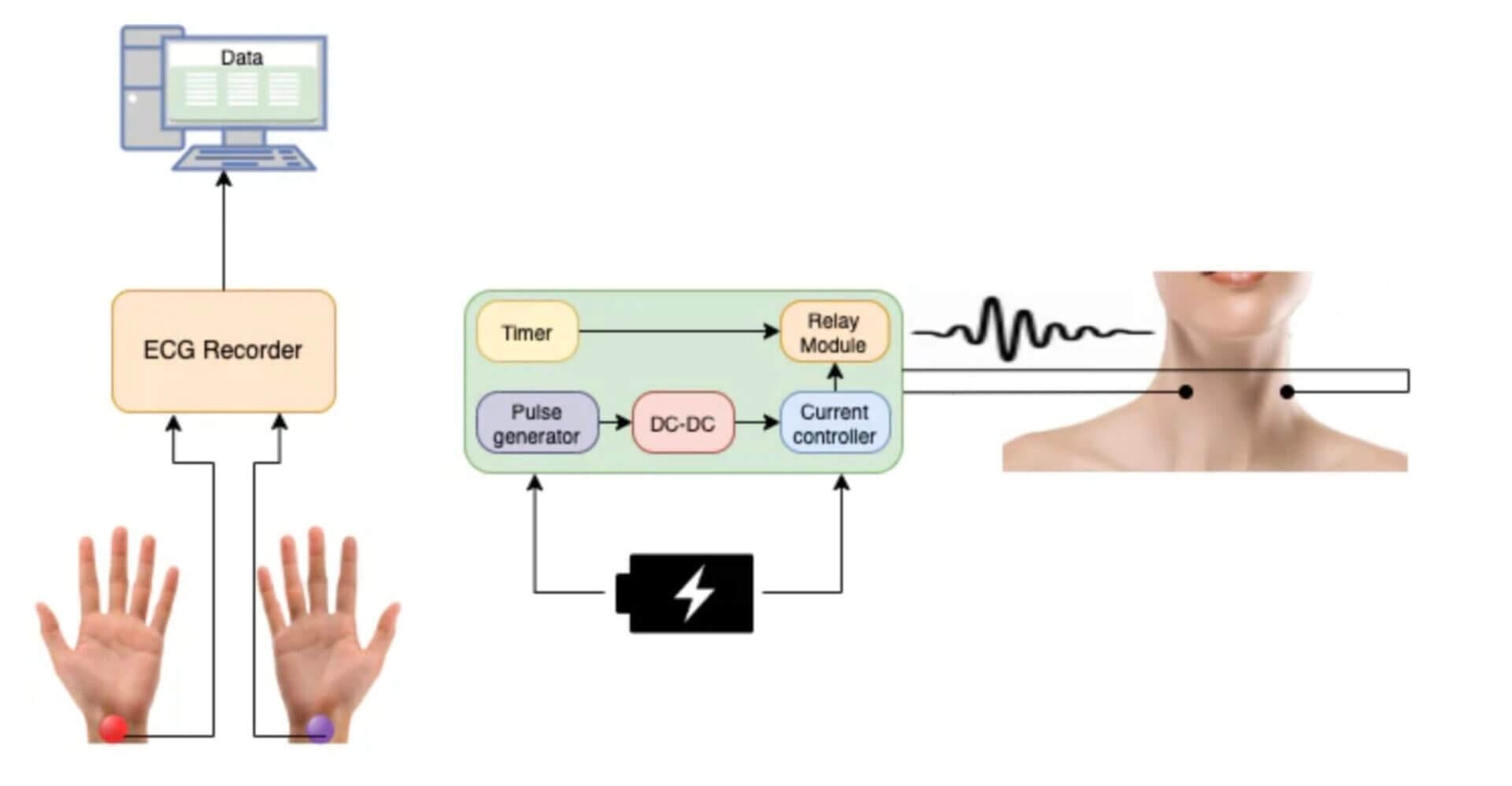
Lastly, the doctored study contains a fake acknowledgement of funding:
“ACKNOWLEDGEMENTS:
Pulsetto: Research to Application Pulsetto Proof of Concept gave funding for the project.”
We reached out to the six authors of the original study to ask whether Pulsetto was used in, or funded, their research. Here’s the response we received from one of the study’s coauthors:
“Pulsetto was not involved and did not fund that research – their device was not used in the 2021 study. They also did not fund the researchers, and I personally have never heard of them before. That 2021 work only used the tragus (ear), not the neck. The figure is doctored.”
— Prof. Dr. Ian McLoughlin
I don’t know about you, but I would never buy products from a company that blatantly lies to its customers. As far as I’m concerned, Pulsetto is a scam and I’d stay away from it.
Does Vagus Nerve Stimulation Work?
Based on the scientific research I could find, vagus nerve stimulation (VNS) is a promising intervention for stress and sleep. But its effects are context-dependent.
For example, a study published in the Journal of Psychological Medicine concluded that VNS can help boost mood, but its effects are partially dependent on the initial mood state. In layman’s terms, that means if you’re in a really bad mood, VNS is more effective than if you’re in a relatively good mood.
Another study, published in European Psychiatry, suggests that VNS can help improve certain sleep parameters, such as increased slow-wave sleep (aka deep sleep) and decreased wakefulness in patients with depression.
In his response to our inquiry about the doctored study, Dr. McLoughlin stated that the authors “[…] have found – and demonstrated conclusively – that Vagus nerve stimulation (VNS) from the tragus can reduce stress. We have since found that it can also reduce nausea. That isn’t to say stimulation from the neck won’t work. It might induce a similar response, but careful and ethically approved testing is required to be sure.”
The bottom line is that the existing scientific evidence suggests that VNS can reduce stress and improve sleep, particularly by enhancing parasympathetic activity and regulating stress-related hormones such as cortisol. However, the effects are more pronounced in people with existing conditions (e.g., depression, high stress levels) than in healthy people. And it’s unclear whether stimulation from the neck can trigger the desired responses.
As a result, VNS might not be the most effective tool in your toolkit if you maintain a lifestyle comparable to mine that includes a good sleep routine, regular exercise, sun exposure, a proper diet, intentional exposure to hormetic stressors such as cold plunging and sauna bathing, and good stress management.
But let’s be realistic: not everyone is perfectly healthy and lives a relatively stress-free life. In fact, I’d argue that most people are exposed to more chronic stressors than they can handle and, as a result, could benefit from a VNS device.
My Experience With Pulsetto
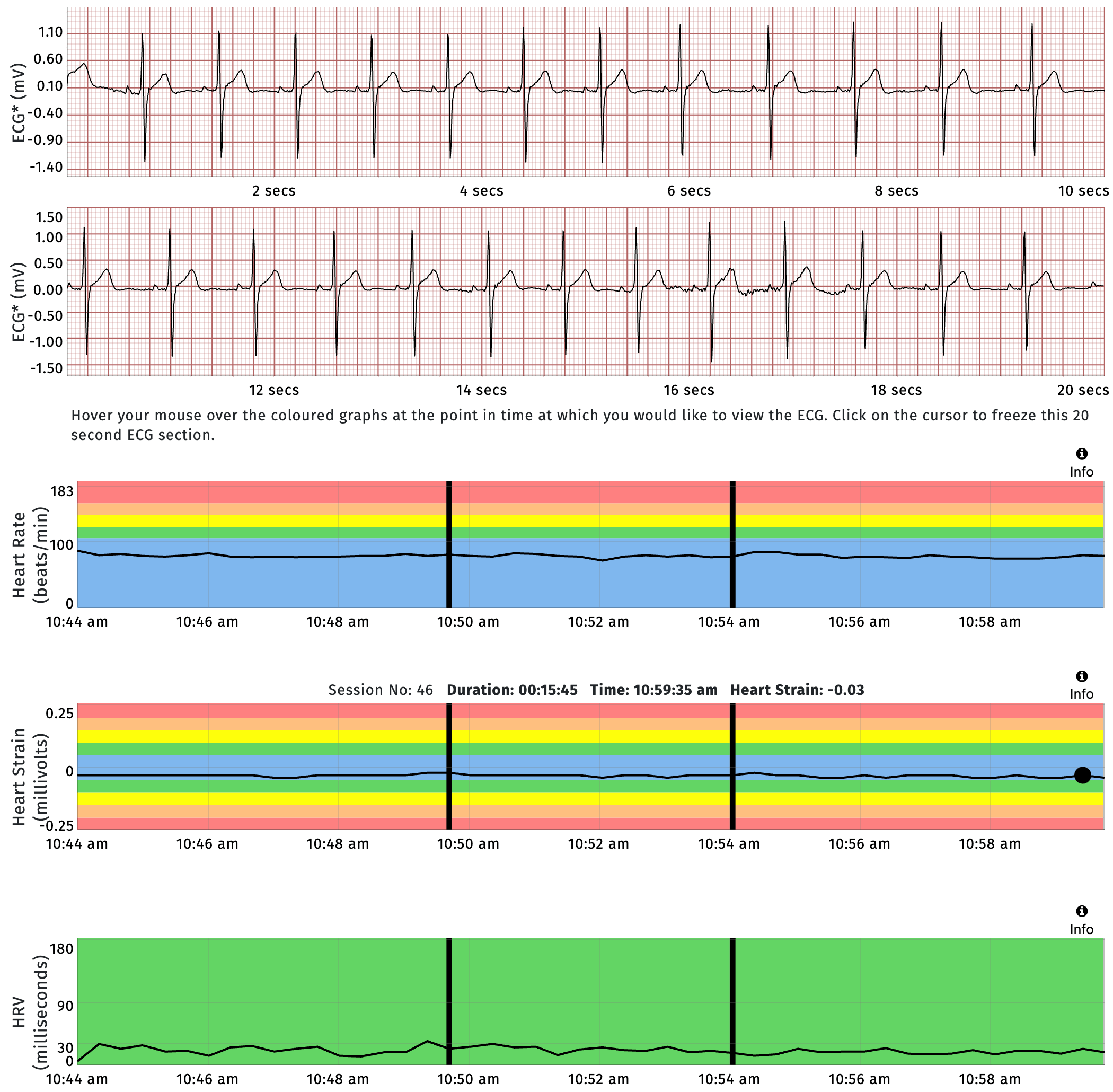
We could probably end the review here and call it a day. But for the sake of completeness, let me share my experience with the device – as uneventful and disappointing as it was.
Pulsetto is relatively easy to use. After pairing it with your phone via the Pulsetto mobile app and answering a couple of questions, you can pick from among several programs, including Stress, Anxiety, Sleep, Burnout and Pain, apply some of the provided conducting gel (similar to the gel used for ultrasounds) and place Pulsetto on your neck.
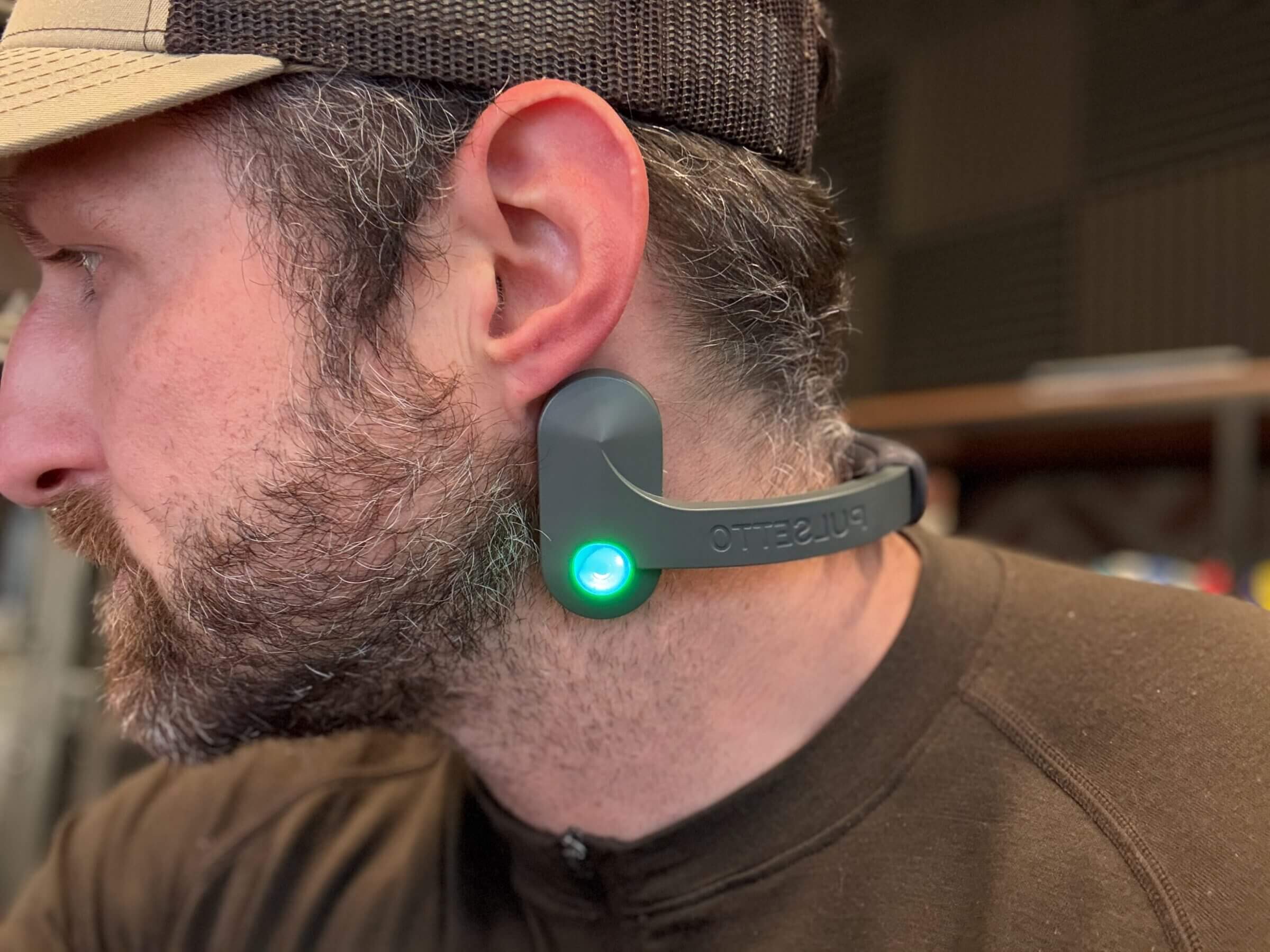
Depending on the intensity level you pick, you might feel a mild tingling sensation on your skin from the electrical current. Six to 20 minutes later, you’re done and likely feel the same as you did before the session (unless you’re responding well to the placebo effect).
In case you’re wondering, the gel is necessary for optimal skin contact and conductance. Without it, the electrical current won’t flow into your tissue. As a result, you’ll have to wipe the gel off your neck when you’re done. That’s not a big deal (it’s easy to wipe off), but it’s a minor inconvenience if you want to use Pulsetto while you’re on the go (I don’t know why you would since it doesn’t work… but just saying).
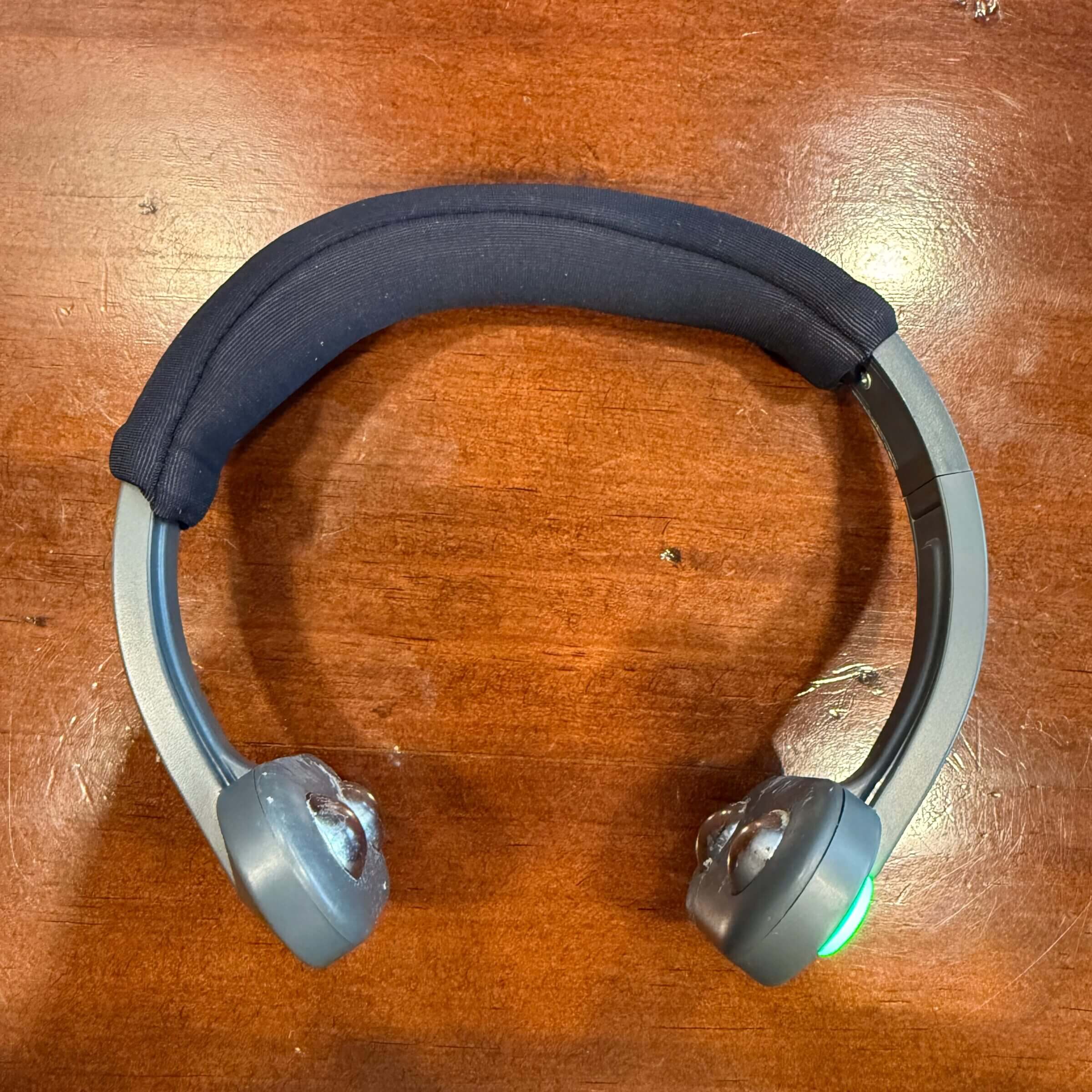
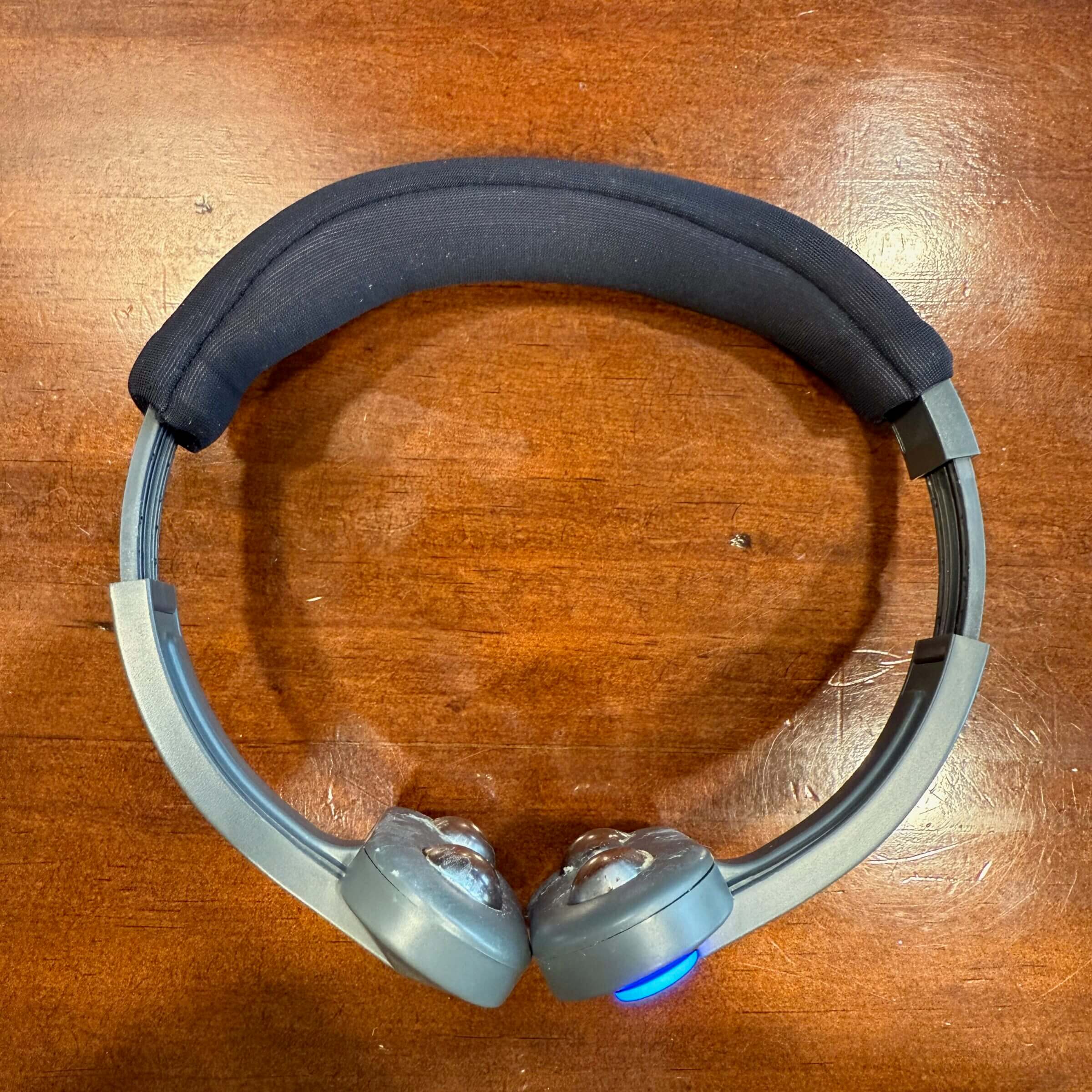
I should also point out that Pulsetto is adjustable and fits different neck sizes. Some users have complained that it doesn’t work well on slender necks, but I’d argue that those users haven’t realized that they can extend the electrodes (as shown on the right, above), which makes them fit tighter.
Others have reported that Pulsetto made them dizzy. I suppose that’s possible if you’re extra sensitive to electrical stimulation. I suppose it’s good news that Pulsetto can trigger some kind of response, even if it’s not the desired one.
During my testing, I wanted to determine whether or not Pulsetto could change how I feel. I know that’s a fairly subjective and non-scientific way of testing a device. But, after all, the only thing that truly matters is whether or not Pulsetto can make you feel better.
Unfortunately, Pulsetto didn’t have any impact on my mood or change how I felt. So I decided to conduct a more scientific test by measuring my heart rate variability (HRV) using a high-end ECG chest strap before, during and after a Pulsetto session.
I figured that if Pulsetto works, I should see an increase in HRV – a sign of parasympathetic activity. Unfortunately, I didn’t see any changes in HRV beyond the normal ups and downs. That could indicate that Pulsetto just didn’t work for me, or that Pulsetto doesn’t work at all. Considering the fraudulent research, I’m leaning towards the latter.
On the flip side, taking a few minutes for intentional breathing exercises had a significant impact on my HRV, resting heart rate and overall mood.
Don’t Bother With Their “Brain Boost” Supplement
Pulsetto also sells a dietary supplement called Cognitive Support that’s meant to boost your brain function and mental performance. The main ingredient in this product is caffeine. Without that ingredient, you would likely not notice any impact on your mental performance.
I’m not suggesting that some of the ingredients in the product can’t support brain function. But instead of consuming synthetic versions of Vitamin B3 (Niacin) and B6, I recommend getting the nature-identical versions of those micronutrients from real food (e.g., meat or freeze-dried beef organ capsules if you’re not a fan of fresh organs).
The main reason I wouldn’t purchase Pulsetto’s supplement is because they don’t show the supplement facts label on their webpage. That’s usually a sign that they have something to hide like junk fillers, flow agents or worse.
Pulsetto vs. Alternatives
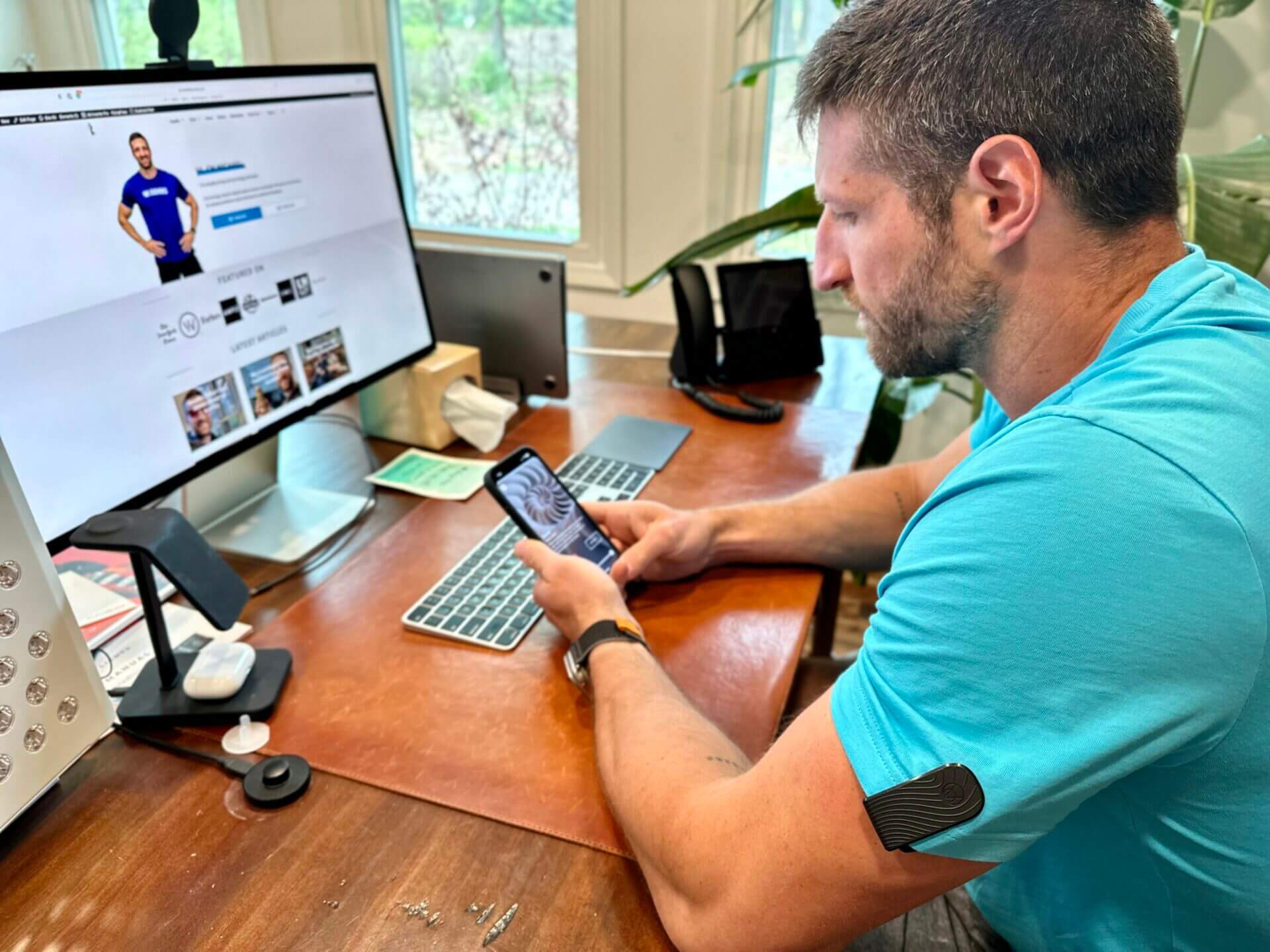
The good news is that there are VNS devices on the market that use the same technology and frequencies as devices used in clinical research. I haven’t tested any of those devices and can’t vouch for them but, on paper, they appear to be more effective than Pulsetto.
One such device is v1 from Vagustim, which uses ear clips and relies on frequencies in the 1 Hz to 100 Hz range.
Alternatives to vagal nerve stimulation are devices such as Apollo Neuro and TouchPoints that use vibration and inaudible sound waves to promote the same calming effects as VNS. We’ve been successfully using both Apollo and TouchPoints for years to help us better cope with stress and improve sleep quality. Even our kids use those devices on a regular basis to help them become more resilient to the unavoidable stressors of daily life.
If electronics aren’t your cup of tea, breath work, meditation, cold plunging, sauna bathing, sun exposure and grounding are highly effective and low-tech methods of reducing stress that humans have been using for millennia.
While I appreciate the ability of technology to support healthy living, I always prefer leveraging natural methods when possible. For example, I can always take a few minutes to focus on my breathing without having to worry about EMFs, charging a battery or having a device on me.
Final Verdict: Pulsetto Is a Scam
As far as I’m concerned, Pulsetto is a scam. Faking scientific research is a red flag that I can’t ignore. Effective devices speak for themselves without requiring doctored evidence.
Beyond that, I have not seen any indication that it delivers on the company’s promises.
Pulsetto has zero scientific backing and it did not work for me. I recommend investing the $469 Pulsetto charges for its sham device into 50 pounds of high-quality meat. That will have a much greater impact on your health than Pulsetto.

Michael Kummer is a healthy living enthusiast and CrossFit athlete whose goal is to help people achieve optimal health by bridging the gap between ancestral living and the demands of modern society.
Medical Disclaimer
The information shared on this blog is for educational purposes only, is not a substitute for the advice of medical doctors or registered dieticians (which we are not) and should not be used to prevent, diagnose, or treat any condition. Consult with a physician before starting a fitness regimen, adding supplements to your diet, or making other changes that may affect your medications, treatment plan or overall health. MichaelKummer.com and its owner MK Media Group, LLC are not liable for how you use and implement the information shared here, which is based on the opinions of the authors formed after engaging in personal use and research. We recommend products, services, or programs and are sometimes compensated for doing so as affiliates. Please read our Terms and Conditions for further information, including our privacy policy.


Hi Michael,
thanks for the critical review. A faked article is a real bad sign!
But one thing is a problem too:
Your application of pulsetto on the picture is not as intended by the makers ;-)
You wear it under your ear, but it should be applied front of the neck to the right and left of the larynx instead of. Because the vagus nerve runs along the side of this area.
Second, in my experience the device is ment to wear the button on the right hand side. So please turn it from left to right. On the photo you use it flipped to the left side.
And if you really want to give it a try: the application could take 5 to ten minutes.
And by the way, your diagram is scaled to an HRV of 180. It is certainly difficult to see a change then. Because the HRV is more likely to be in double figures.
And to be clear, my comment is in no way intended to excuse the bungling with the fake article.
Best regards
Iven
Hey Iven,
I appreciate your suggestions! I had tested Pulsetto a year ago before I decided to write this article (and record the corresponding video). I admit I got sloppy when I took the pictures and B-roll because I knew already it wasn’t working. Rest assured, I used the device correctly when I had tested it initially. I’ll re-take the pictures when I get a chance.
Regarding the HRV — I tried to capture (for the article), the entire reading. But I looked at minute-by-minute changes in a smaller scale and couldn’t see anything beyond normal variations.
Cheers,
Michael
Thanks Michael for your complete review regarding Pulsetto. I was always on the edge to buy this thing but always a bit suspicious, especially as no user ever reports with some quantified results. At least yours is well documented and it reminded me the review from wired which was already a warning.
You’re most welcome, Anthony! I’m glad you found my review helpful.